Bibimbap, meaning “mixed rice” in Korean, is a vibrant and wholesome dish featuring a colorful array of vegetables, crispy tofu, and spicy gochujang sauce, all served over a bed of warm rice. This Vegan Korean Bibimbap with Tofu and Veggies is a delicious plant-based take on the classic, offering a perfect balance of flavors, textures, and nutrients.
Whether you’re looking for a hearty meal or a stunning dish to impress guests, this bibimbap recipe is a must-try. Let’s get cooking!
Why Choose Vegan Korean Bibimbap?
1. A Feast for the Eyes and Palate
With its vibrant mix of vegetables and bold flavors, bibimbap is as visually stunning as it is delicious.
2. Customizable and Versatile
Easily adapt the recipe to include your favorite veggies, grains, or plant-based proteins.
3. Rich in Flavor and Nutrition
Packed with fresh vegetables, protein-rich tofu, and a spicy, umami-rich gochujang sauce, this dish is both satisfying and nourishing.
Ingredients
For 4 servings, you’ll need:
Base:
- 2 cups cooked white or brown rice
- Optional: 1 teaspoon sesame oil (to mix into the rice)
Vegetables:
- 1 medium zucchini, julienned
- 1 medium carrot, julienned
- 1 cup spinach, blanched
- 1 cup bean sprouts, blanched
- 1 cup shiitake mushrooms, sliced
- 2 tablespoons soy sauce, divided
- 1 teaspoon sesame oil, divided
Tofu:
- 1 block (14 oz) extra-firm tofu, pressed and cubed
- 2 tablespoons cornstarch
- 2 tablespoons soy sauce
- 1 tablespoon sesame oil
Gochujang Sauce:
- 2 tablespoons gochujang (Korean chili paste)
- 1 tablespoon maple syrup or agave
- 1 tablespoon rice vinegar
- 1 teaspoon sesame oil
- 1 teaspoon soy sauce
Garnishes:
- 1 tablespoon sesame seeds
- 2 green onions, sliced
- Optional: Kimchi (ensure it’s vegan-friendly)
Ingredient Breakdown
1. Gochujang
This Korean chili paste is the star of bibimbap, delivering a bold, spicy, and slightly sweet flavor.
Substitute: If gochujang isn’t available, mix sriracha with a touch of miso paste and maple syrup for a similar flavor profile.
2. Vegetables
The variety of cooked and raw vegetables adds both texture and nutrition.
Customize: Include bell peppers, snap peas, or bok choy based on your preference or availability.
3. Tofu
Crispy tofu serves as the protein-packed component of this dish.
Alternative: Use tempeh, seitan, or marinated mushrooms as a substitute.
Instructions
Step 1: Prepare the Rice
- Cook the rice according to package instructions.
- Once cooked, mix with sesame oil (optional) to enhance the flavor and keep it from clumping. Set aside.
Step 2: Cook the Vegetables
- Heat a non-stick skillet over medium heat. Add ½ teaspoon sesame oil and cook each vegetable (zucchini, carrots, spinach, bean sprouts, and mushrooms) separately with a dash of soy sauce until tender. Set aside.
Step 3: Prepare the Tofu
- Toss the tofu cubes in soy sauce, then coat evenly with cornstarch.
- Heat sesame oil in a skillet over medium heat. Cook the tofu cubes for 3-4 minutes per side until golden and crispy. Set aside.
Step 4: Make the Gochujang Sauce
- In a small bowl, whisk together the gochujang, maple syrup, rice vinegar, sesame oil, and soy sauce until smooth.
Step 5: Assemble the Bibimbap
- Divide the cooked rice among four bowls. Arrange the cooked vegetables and tofu on top in separate sections, creating a colorful presentation.
- Drizzle with the gochujang sauce.
Step 6: Garnish and Serve
- Sprinkle sesame seeds and green onions over the top.
- Serve with kimchi on the side, if desired. Mix everything together before eating for the full bibimbap experience!
Picture Gallery
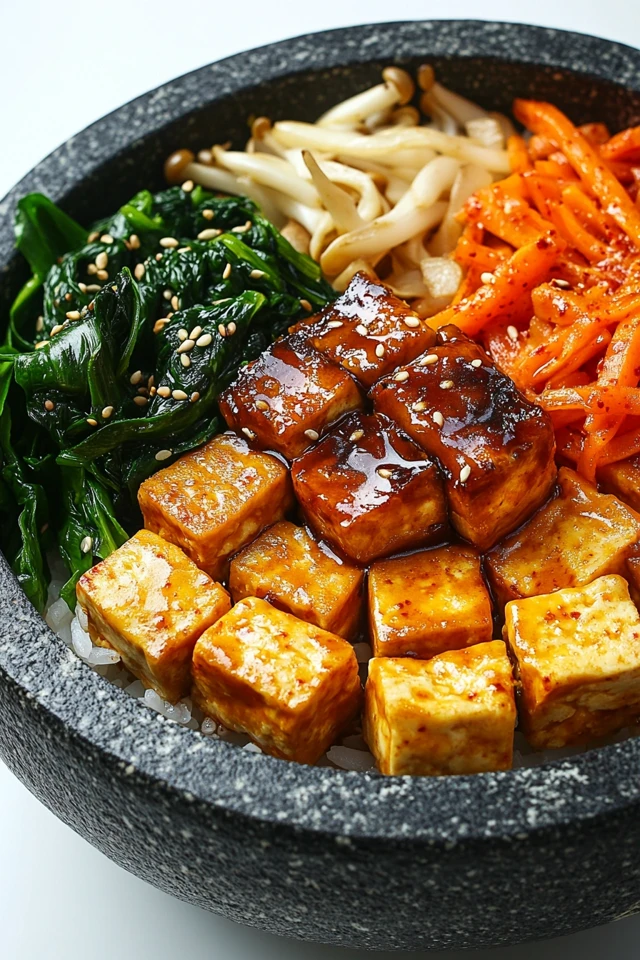
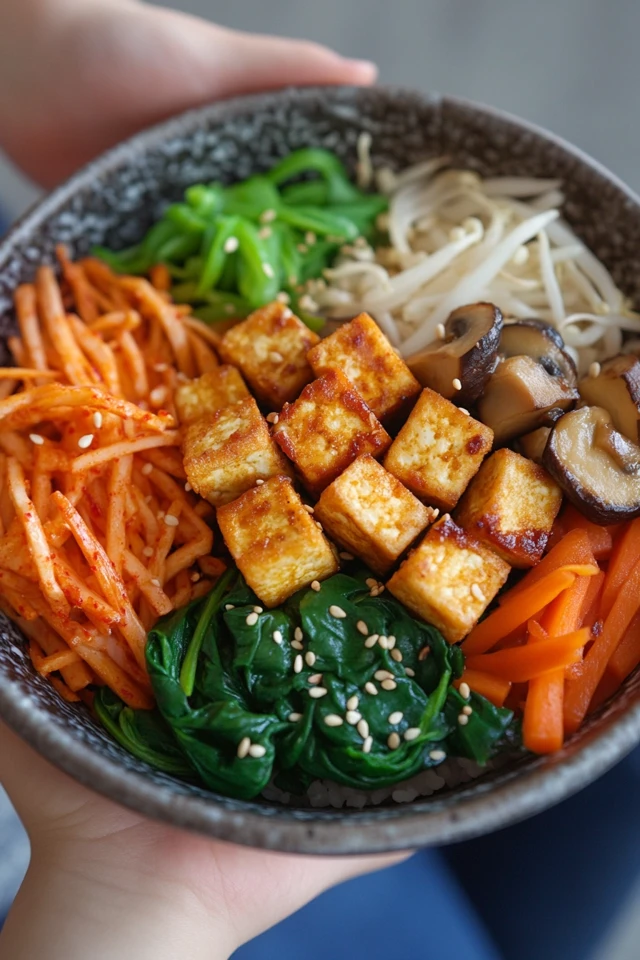
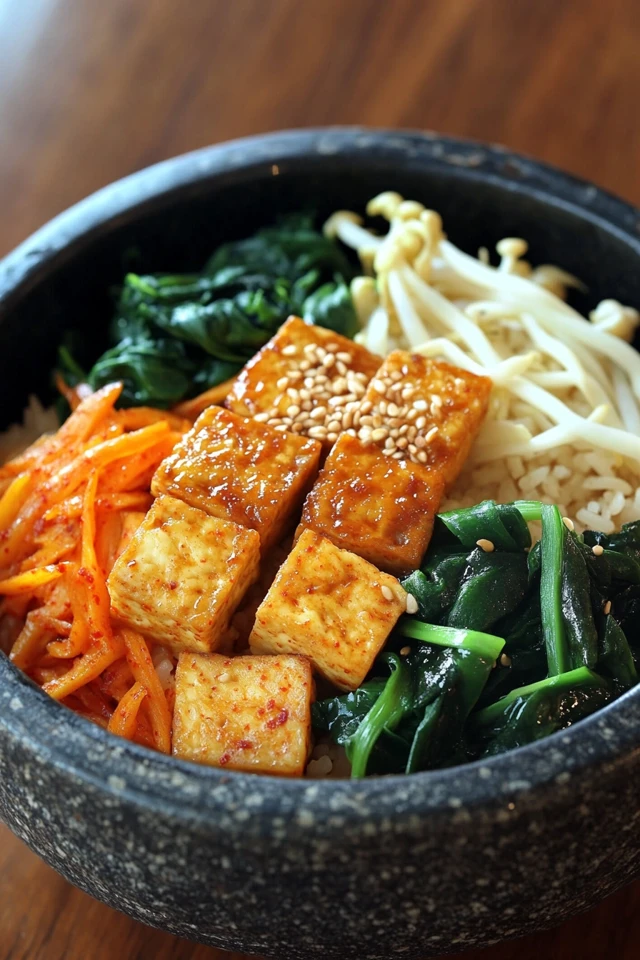
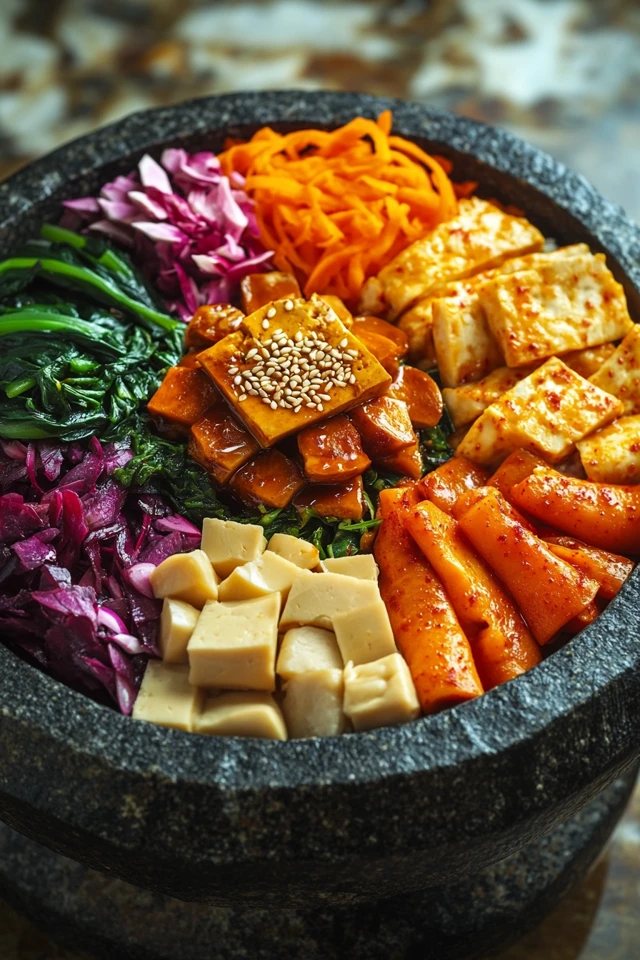
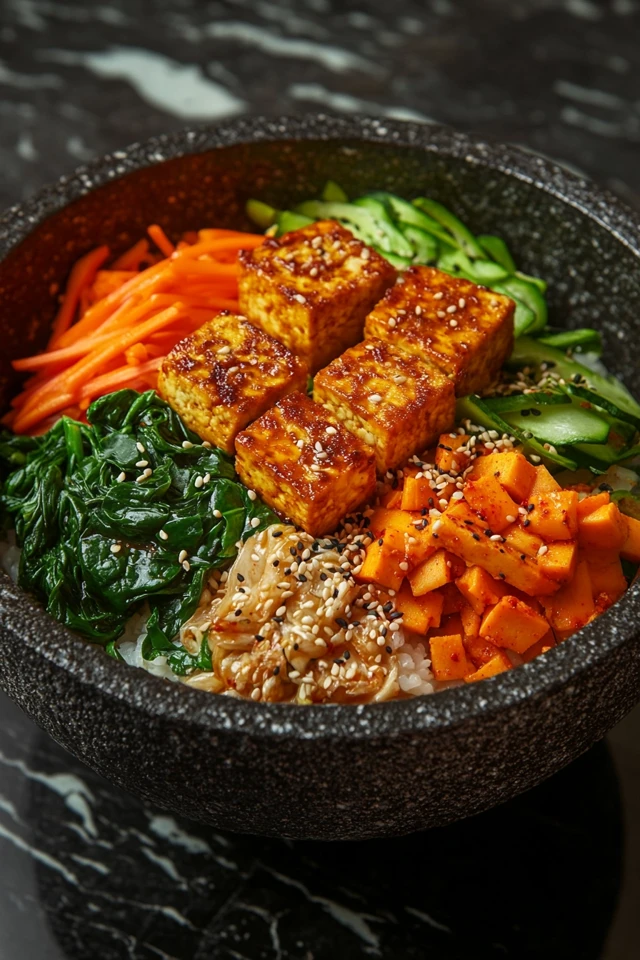
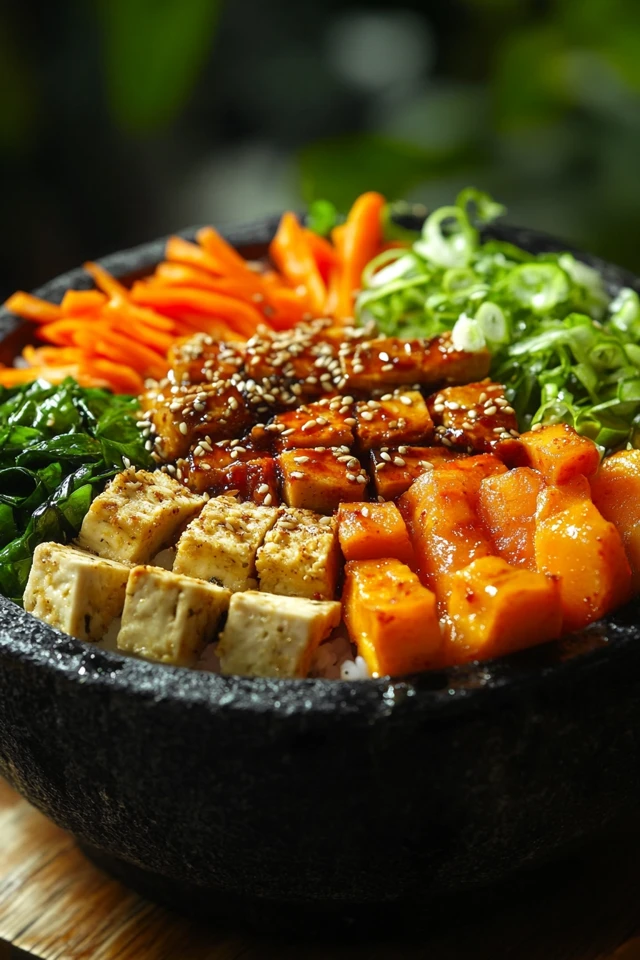
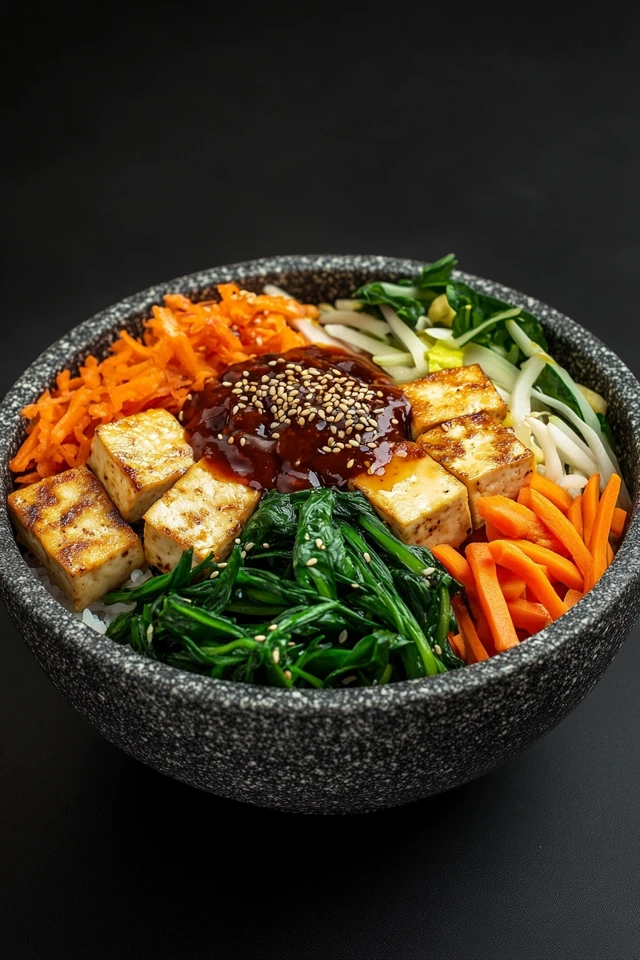
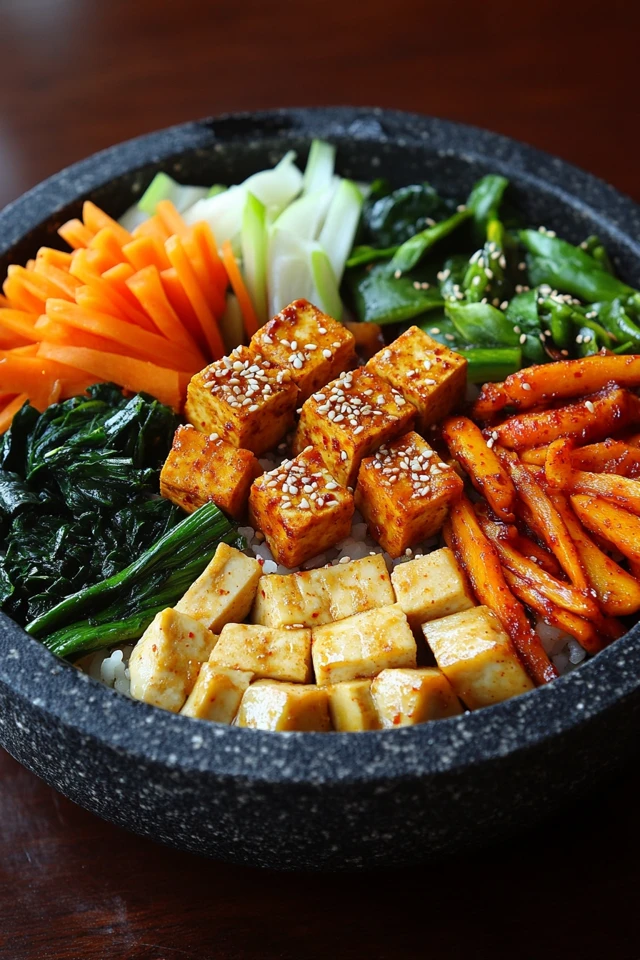
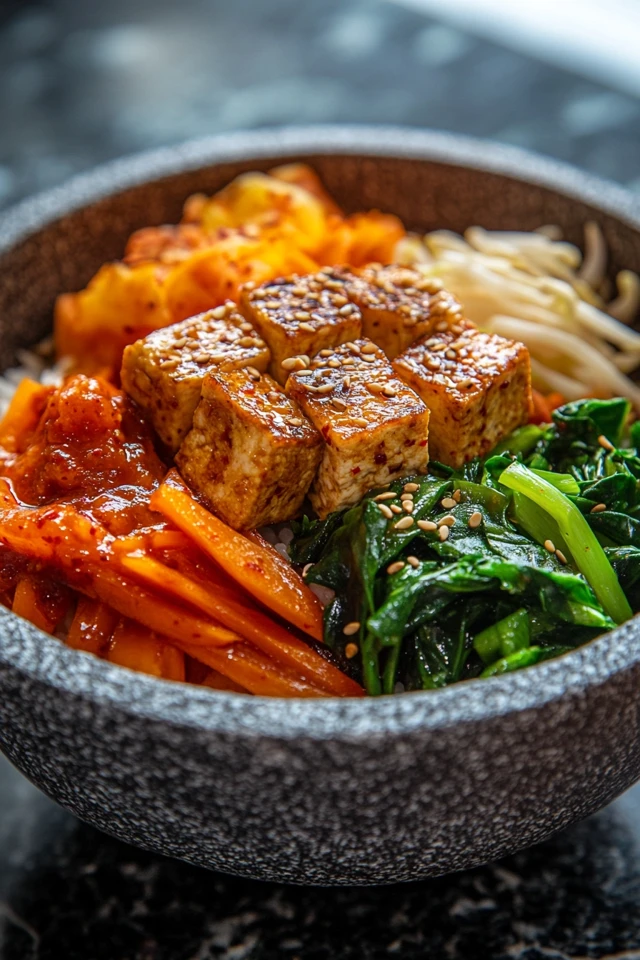
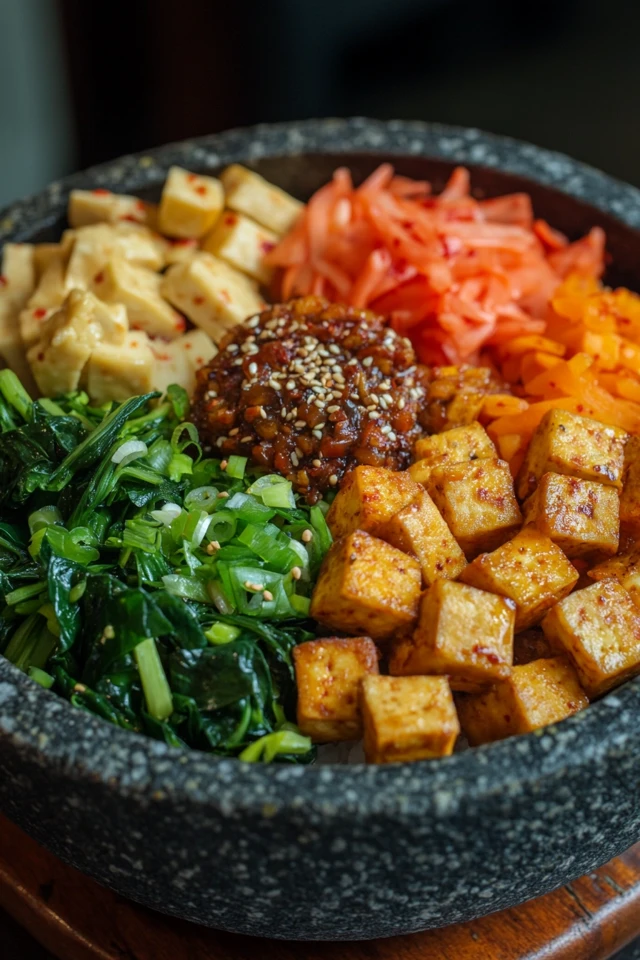
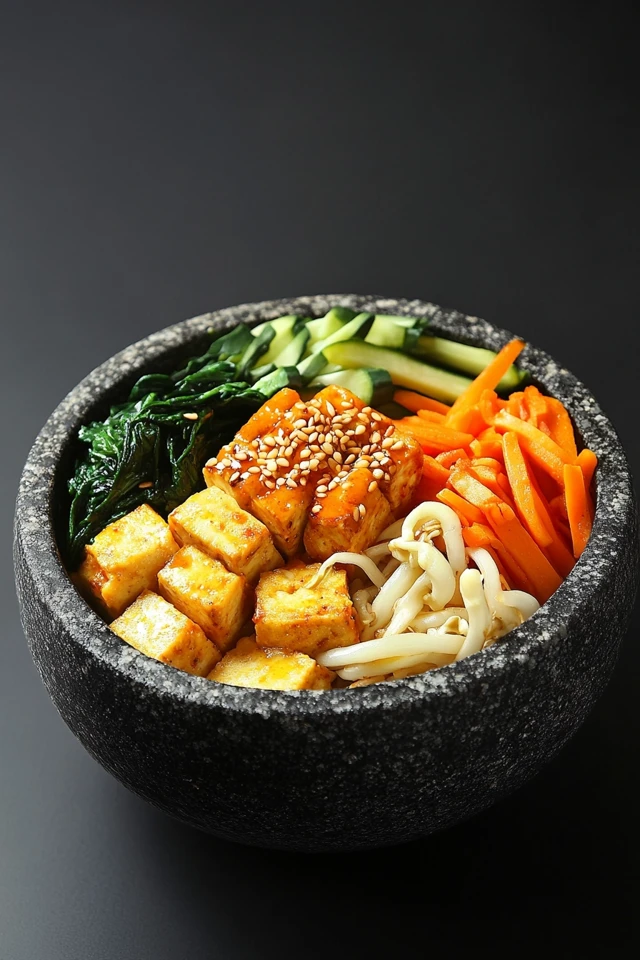
Tips and Variations
1. Make It Gluten-Free
Use tamari instead of soy sauce and ensure your gochujang is gluten-free.
2. Add More Protein
Include edamame, chickpeas, or grilled tempeh for an extra protein boost.
3. Adjust the Spice Level
Reduce the amount of gochujang for a milder sauce, or add sriracha for extra heat.
4. Swap the Base
Replace rice with quinoa, cauliflower rice, or even noodles for a unique twist.
5. Prep Ahead
- Cook the rice, vegetables, and tofu in advance and store them separately in airtight containers.
- Assemble and reheat just before serving for a quick and easy meal.
Nutritional Information (Per Serving)
- Calories: 380
- Protein: 15g
- Carbohydrates: 50g
- Fat: 12g
- Fiber: 6g
- Iron: 15% of the Daily Value (DV)
Health Highlight: This bibimbap is a balanced meal, offering plant-based protein, whole grains, and a variety of vegetables rich in fiber, vitamins, and antioxidants.
Conclusion
Vegan Korean Bibimbap with Tofu and Veggies is a colorful, flavorful dish that’s as fun to make as it is to eat. With its mix of textures and bold flavors, this recipe is perfect for any occasion, whether it’s a casual dinner or a meal to impress guests.
Have you tried this recipe? Share your favorite toppings or creative twists in the comments below! Don’t forget to pin or share this recipe for others to enjoy.
FAQs
1. Can I make this recipe without gochujang?
Yes! Substitute gochujang with a mixture of sriracha, miso paste, and a touch of sugar for a similar flavor.
2. How do I store leftovers?
Store the rice, vegetables, tofu, and sauce separately in airtight containers in the fridge for up to 3 days. Reheat before assembling.
3. Is bibimbap traditionally vegan?
Traditional bibimbap often includes egg and meat, but it’s easy to adapt to a vegan version by using tofu or plant-based proteins.
4. Can I use pre-cooked rice?
Yes! Pre-cooked or leftover rice works perfectly for this recipe. Just reheat it before serving.
5. What can I use instead of tofu?
Try tempeh, jackfruit, or sautéed mushrooms for a delicious protein alternative.
Disclaimer: The nutritional information provided is an estimate based on standard ingredient values and typical serving sizes and is for informational purposes only. Variations in ingredients, brands, preparation methods, and portion sizes may result in differences in the actual nutritional content of your dish. This recipe is not intended to replace professional dietary advice or medical guidance. Individual dietary needs vary, so always consult a registered dietitian, nutritionist, or healthcare provider for specific concerns. By using this recipe, you agree that the creators are not responsible for any outcomes, including inaccuracies or adverse reactions.

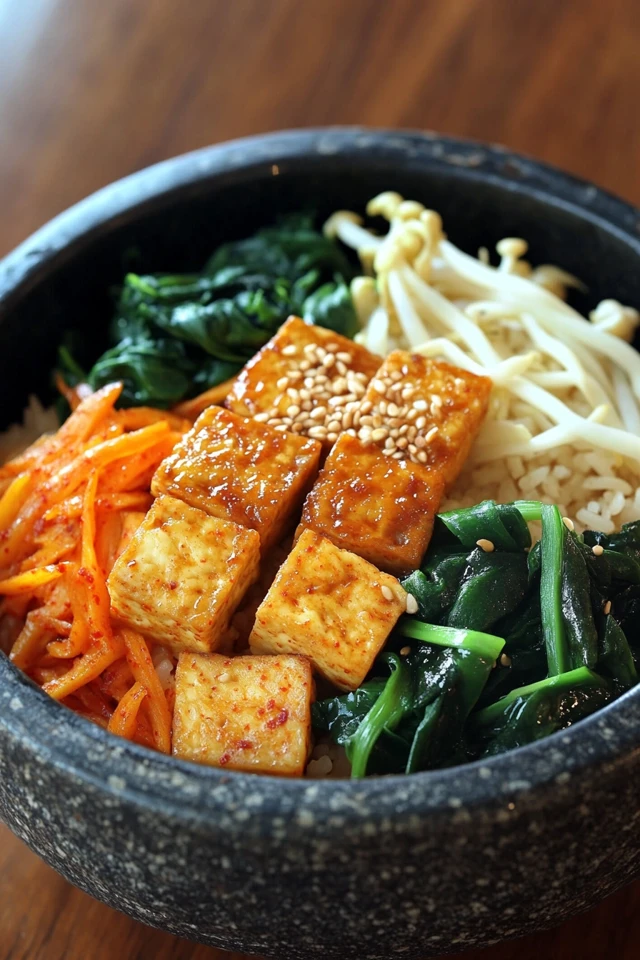

Thanks for sharing. I read many of your blog posts, cool, your blog is very good.
I don’t think the title of your article matches the content lol. Just kidding, mainly because I had some doubts after reading the article.
https://t.me/s/officials_pokerdom/3644
https://t.me/s/dragon_money_mani